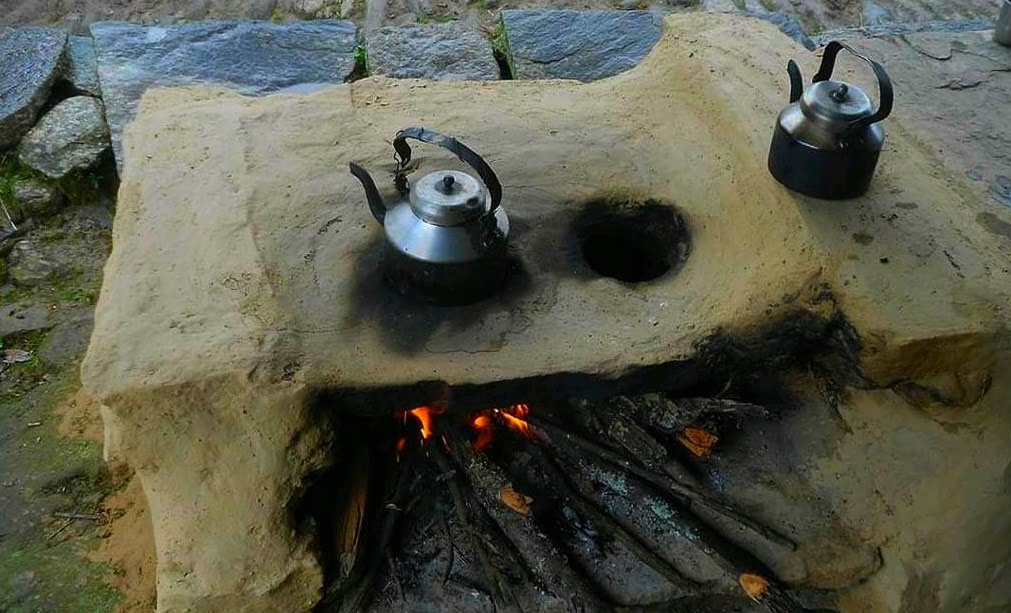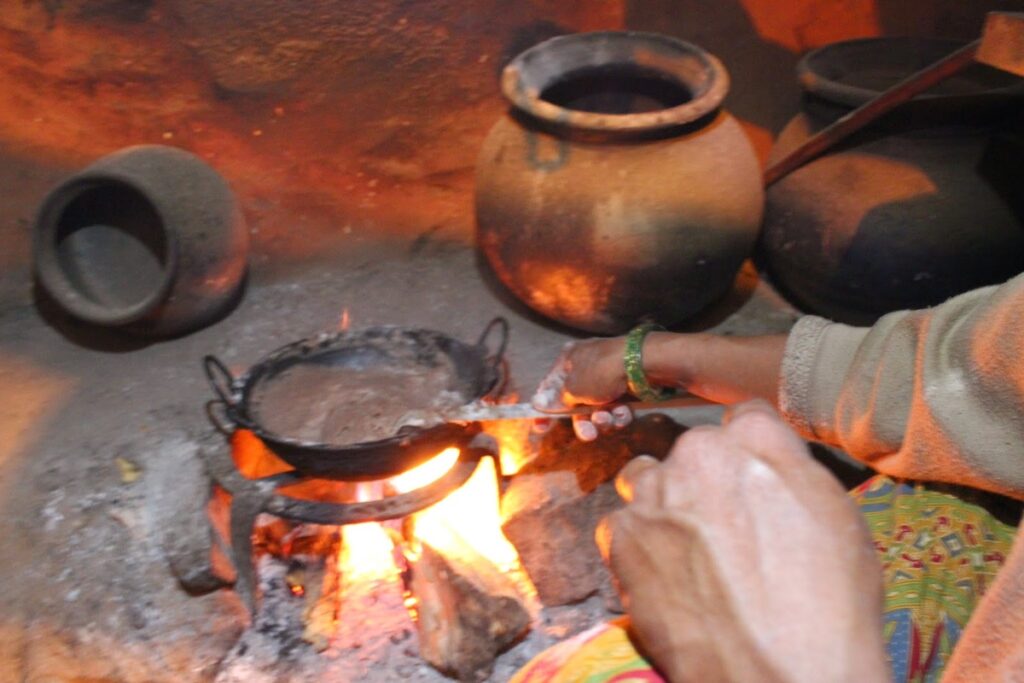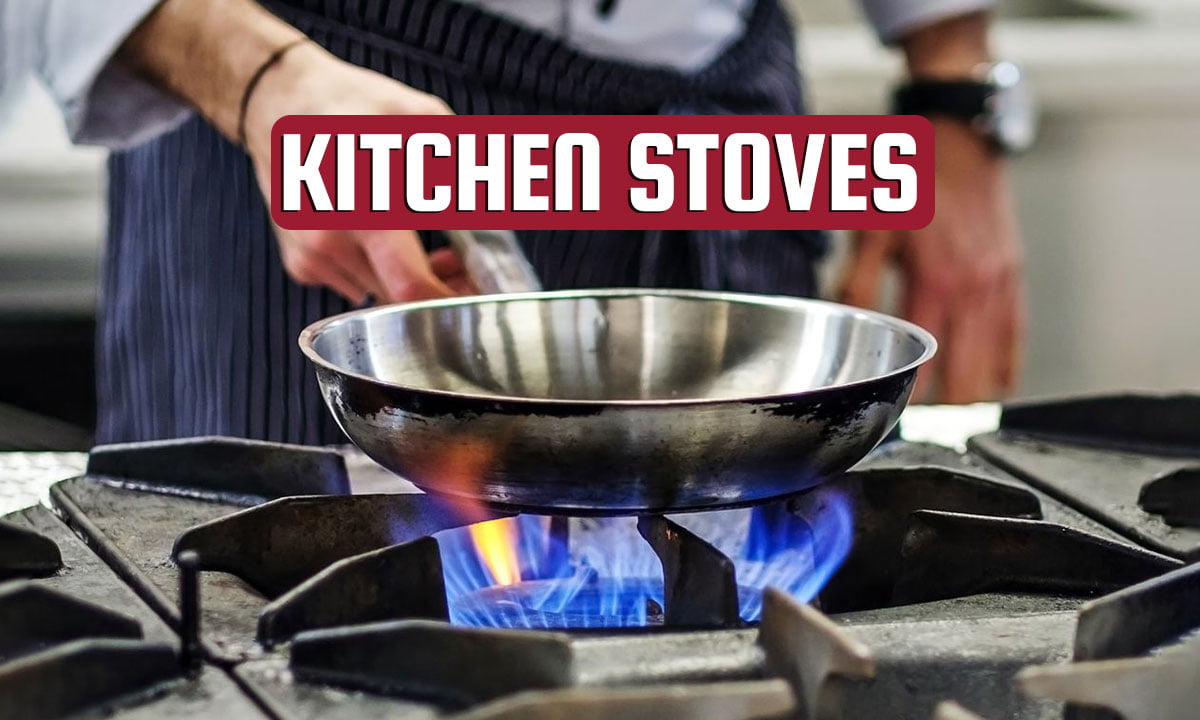Introduction to Kitchen Stoves: A Journey Through Time and Technology
The kitchen stove, a fundamental appliance found in homes worldwide, stands as a cornerstone of culinary evolution.
Defining the Kitchen Stove
A kitchen stove, often referred to simply as a stove or cooker, is a pivotal kitchen appliance specifically designed for cooking food. These stoves rely on the application of direct heat for the cooking process and frequently contain an oven for baking purposes. The variations include wood-burning, gas, and electric stoves, each utilizing different sources for heating.
Significance and Ubiquity in Modern Homes
In contemporary households, the kitchen stove serves as an indispensable tool, facilitating the preparation of a myriad of culinary delights. As technology advances, so do these appliances, with modern stoves incorporating a range of features, from stovetops to ovens, and even built-in extractor hoods.
Table of Contents
History of Kitchen Stoves: From Open Fires to Modern Appliances
Early Cooking Methods
In the annals of culinary history, the earliest cooking methods revolved around open fires and basic structures fueled by wood. Ancient civilizations, like the Chinese during the Qin Dynasty and the Japanese in the Kofun period, utilized clay stoves that enclosed the fire. These early stoves featured holes where pots were placed atop or suspended into the structures for cooking.

Transition to Enclosed Stoves
Throughout the Middle Ages in Europe, people predominantly cooked over open fires. However, the limitations of this method, including danger, excessive smoke, and poor heat efficiency, spurred innovation. The concept of enclosing the fire for better heat utilization emerged, leading to the development of fire chambers and later, the fully enclosed 1735 Castrol stove by François de Cuvilliés.
Innovations by Sir Benjamin Thompson
A significant breakthrough in stove design came from Sir Benjamin Thompson, Count Rumford, in the late 18th century. His innovations in chimney construction and the development of the Rumford fireplace vastly improved heating efficiency. Thompson’s designs inspired the creation of a kitchen range made of brick, enhancing fuel efficiency and safety in cooking practices.
Advancements in the 19th Century
The first half of the 19th century witnessed a series of improvements in stove design. Cast iron stoves replaced masonry constructions, and their size decreased to suit domestic kitchen settings. Innovators like Mary Evard introduced features such as divided cooking spaces for dry and moist baking, while Elizabeth Hawks patented baking attachments for stoves, catering to diverse culinary needs.
Transition to Gas and Electric Stoves
The transition from coal to gas marked a milestone in stove technology. Gas stoves, experimented with since the 1820s, gained commercial success in England in the 1880s, becoming popular due to cheaper and more efficient gas supplies. Meanwhile, the electric stove faced initial challenges but gradually gained acceptance, especially following improvements in heating elements and temperature control.
Types of Kitchen Stoves and Their Impact on Culinary Evolution

Varieties of Kitchen Stoves
Fuel-Based Stoves:
- Wood-Burning Stoves: Stemming from ancient practices, these stoves use wood or charcoal for cooking, maintaining a traditional touch in some households.
- Gas Stoves: Utilizing gas as a primary fuel, these stoves gained popularity due to their efficiency and widespread availability of gas supplies.
- Electric Stoves: Powered by electricity, these stoves offer convenience and precision in temperature control, revolutionizing modern kitchens.
Modern Kitchen Range:
- Components: These ranges encompass stovetops, ovens, and extractor hoods, offering a comprehensive cooking solution in one appliance.
Advantages and Disadvantages
Fuel Efficiency and Environmental Impact:
- Wood vs. Gas vs. Electric: Each type of stove presents varying degrees of fuel efficiency and environmental impact, influencing consumer preferences based on availability and ecological concerns.
Affordability and Availability:
- Cost Considerations: Affordability and accessibility of fuel sources play a significant role in the adoption of kitchen stoves, especially in regions where utility options vary.
Comparison Between Stove Types:
- Efficiency and Performance: Examining the comparative performance in terms of heating capabilities, temperature control, and overall cooking experience among wood, gas, and electric stoves.
Technological Innovations
Heating Elements and Control:
- Evolution of Heating Elements: From basic resistance wires to advanced temperature control mechanisms, technological advancements have revolutionized cooking precision.
- Modern Features: Stovetops with smooth surfaces, precise temperature controls, and smart functionalities characterize the latest innovations in kitchen stove technology.
Societal Impact and Culinary Practices
Influence on Cooking Styles:
- Culinary Evolution: The adoption of different stove types has altered cooking styles, allowing for diverse meal preparations and culinary experimentation.
Changes in Home Design:
- Kitchen Layouts: Stove technology has influenced kitchen designs, shaping the layout and organization of modern culinary spaces.
Cultural and Historical Significance:
- Impact on Society: Stoves have had a profound impact on societal norms, transforming traditional cooking methods and reshaping cultural practices.

Challenges and Acceptance of New Cooking Technologies
Historical Perspectives
Throughout history, the adoption of new cooking technologies, particularly the transition from open fires to stoves, faced significant resistance. In the mid-1800s, objections to stove adoption were multifaceted. Concerns about disagreeable odors, health implications related to bad air and smoke, and sentimental attachment to the nostalgia of open fires were predominant. The opposition was fueled by the belief that the energy emanating from an open fire nurtured the human spirit.
However, women welcomed the transition. They had long endured the challenges of open hearth cooking, suffering from the hazards of “hearth death” and frequently burning holes in their clothing due to sparks from open fires. For them, adopting cook stoves meant safer, cleaner, and more efficient kitchens, transforming the landscape of meal preparations and kitchen safety.
Technological Challenges
Temperature management and stove design posed considerable challenges during the early adoption stages. Innovators attempted various solutions to address these issues. Concepts like rotating tops and fireboxes, as well as adjustable heights in stoves, aimed to cater to diverse user needs and ergonomic considerations. However, the enduring problem was achieving optimal temperature for satisfactory baking and cooking, prompting ongoing innovations in stove design and functionality.
Socioeconomic Implications
The affordability and accessibility of stoves significantly influenced their adoption. As iron became less costly and manufacturing technology improved, stoves became more affordable. This accessibility led to increased adoption across different socioeconomic strata. Stoves became common not only in wealthier households but also among less affluent families as they became more cost-effective, furthering their societal integration.
Geographically, stoves accompanied settlers as they moved westward, becoming a ubiquitous fixture in various regions. Their widespread acceptance contributed to the cultural diffusion of stove usage, shaping culinary practices and domestic life.

Regional and Cultural Adaptations of Kitchen Stoves
Canadian and American Perspectives
The evolution of stoves in Canada and the United States showcases the unique historical perspectives of these regions. In Canada, the St. Maurice Iron Works played a pivotal role in transitioning from traditional heating methods to iron stoves. The introduction of free-standing six-plate cast iron box stoves symbolized a significant leap in stove manufacturing.
In British Columbia, historical sites like the O’Keefe Ranch exemplify the diverse stove collections from the mid-19th century. These collections offer a glimpse into the stove heritage of the region, displaying examples that mirror the technological advancements and societal needs of that era.
Stove Innovations in Different Regions
The emergence of stove manufacturers in various American settlements, notably in Victoria and other burgeoning towns, marked a shift in stove accessibility. Compact and versatile stoves, such as the “E Church Phil” stove from Philadelphia, represent the regional innovations in stove design and functionality. These adaptations aimed to cater to the needs of specific communities and geographical areas.
Globally, the longevity and resurgence of cook stoves over nearly two centuries showcase their enduring significance. Periodic resurgences often coincide with self-sufficiency movements, evoking nostalgia for simpler times and influencing consumer preferences.
Modern Stove Dynamics and Future Prospects
Contemporary Trends
In the modern era, stove technology has undergone remarkable advancements. Stoves now incorporate smart features, precise controls, and energy-efficient functionalities. These innovations align with the tech-driven contemporary lifestyle, offering convenience and efficiency to consumers.
Moreover, there’s a growing emphasis on sustainability in stove manufacturing. From exploring new energy sources to utilizing eco-friendly materials, manufacturers are increasingly focused on reducing environmental impact while maintaining optimal performance.
Societal Perceptions
The coexistence of sentimentality for traditional stoves and the excitement around innovative technologies characterizes contemporary societal perceptions. Modern stoves continue to influence culinary styles, encouraging diverse cuisines and culinary experimentation. Their impact extends beyond functionality, contributing to the cultural fabric of societies.
As technology evolves and societal preferences shift, the trajectory of kitchen stoves seems poised for further advancements. The fusion of tradition and innovation will likely continue to shape the evolution of kitchen stoves, reflecting changing lifestyles and cultural inclinations.
Impact on Society and Cooking Practices
A. Influence on Cooking Styles and Food Preparation
Kitchen stoves have significantly influenced cooking styles and food preparation techniques, revolutionizing the culinary landscape. The transition from open fires to stove cooking allowed for precise temperature control and multi-dish cooking, altering the way meals were prepared. With the advent of stoves, culinary practices diversified, enabling the creation of complex dishes and introducing new cooking methodologies such as baking, simmering, and roasting simultaneously.
Moreover, stoves facilitated the development of varied cuisines by providing a consistent heat source essential for experimenting with diverse ingredients and cooking methods. This shift brought about culinary innovations worldwide, contributing to the rich tapestry of global cuisine.
B. Changes in Home Design and Kitchen Layouts
The integration of kitchen stoves into domestic settings has reshaped home designs and kitchen layouts. In earlier times, kitchens were often separate from the main living areas due to the smoke and heat generated by open fires. However, the introduction of stoves allowed for safer, more contained cooking spaces within homes. This innovation led to open-plan kitchen designs, integrating the cooking area seamlessly into the living space.
Furthermore, the evolution of stove technology prompted advancements in kitchen appliances and cabinetry. Stoves became focal points in kitchen design, influencing the layout and functionality of modern kitchens. The incorporation of dedicated spaces for stoves, ovens, and cooking ranges has become a standard feature in contemporary home design, emphasizing both aesthetics and functionality.
C. Cultural and Historical Significance
The cultural and historical significance of kitchen stoves extends beyond their functional role in cooking. Stoves symbolize the evolution of human civilization and technological progress in domestic life. They mark a shift in societal norms, representing advancements in home comfort, safety, and efficiency.
Historically, the adoption of stoves faced resistance due to societal attachments to traditional open fires. However, their eventual acceptance and widespread use signify the adaptability of cultures and the willingness to embrace technological advancements.
Challenges and Acceptance of New Cooking Technologies
A. Resistance and Opposition in Historical Context
The historical transition from open fires to stoves was met with considerable resistance. Concerns about disagreeable odors, health implications related to bad air and smoke, and sentimental attachments to traditional hearth cooking impeded the initial adoption of stoves. There was a prevailing belief that the warmth and ambiance of open fires nurtured not only physical but also emotional well-being.
B. Challenges in Temperature Management and Efficiency
One of the critical challenges during the adoption of stoves was achieving optimal temperature management for cooking. Early stove designs faced hurdles in maintaining consistent heat for various cooking methods, leading to innovations in stove technology. Concepts like rotating tops, adjustable heights, and different firebox positions were attempts to address these challenges, paving the way for more efficient and user-friendly stove designs.
C. Resurgence and Nostalgia Associated with Cook Stoves
Despite initial resistance, cook stoves experienced a resurgence driven by nostalgia for simpler times and self-sufficiency movements. Their reemergence signifies a longing for traditional cooking methods, prompting a renewed interest in heritage cooking and vintage stove collections. This nostalgia has also influenced contemporary stove designs, with manufacturers incorporating vintage aesthetics into modern appliances.
Conclusion
A. Summary of Evolution and Diversity in Kitchen Stove Technology
The evolution of kitchen stoves from open fires to modern appliances has been a transformative journey, impacting societal norms, culinary practices, and home design. From the challenges of temperature management to the cultural significance of stoves, their evolution reflects the dynamism of human innovation and adaptability.
B. Reflection on Historical Significance and Contemporary Relevance
Looking back at the historical significance of stoves and their impact on society, it’s evident that these appliances have played a pivotal role in shaping domestic life and culinary traditions. Despite advancements in technology, there remains a nostalgic reverence for traditional cooking methods.
C. Closing Thoughts and Invitation for Feedback from Readers
The journey of kitchen stoves unveils a fascinating narrative of human progress and societal changes. As we continue to witness innovations in stove technology, it’s essential to reflect on their historical legacy and ongoing relevance. We invite readers to share their thoughts, experiences, and feedback on the profound influence of kitchen stoves in shaping our homes and culinary experiences.

